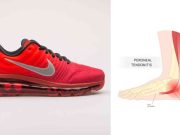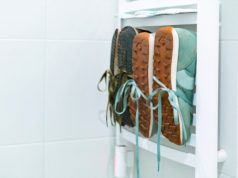Running shoes typically last between 300 to 500 miles before needing replacement. Factors like your running style, body weight, and the terrain you run on can affect the lifespan of your shoes. It’s essential to monitor the wear and tear of your shoes and replace them when they show signs of deterioration to prevent injuries.
When it comes to running, the most essential piece of equipment is your shoes. Running shoes provide support and cushioning for your feet, prevent injuries, and enhance performance. However, like any other equipment, running shoes have a lifespan and eventually wear out. If you’re an avid runner, you may be wondering how long your running shoes should last before needing to be replaced. In this blog post, we’ll explore how many miles running shoes last and the factors that affect their durability. So, whether you’re a seasoned runner or just starting, keep reading to find out more.
Table of Contents
How Many Miles Do Running Shoes Last:
Running shoes typically last between 300 to 500 miles before needing replacement. Factors like your running style, weight, and the terrain you run on can affect the lifespan of your shoes. It’s essential to monitor the wear and tear on your shoes and replace them when they no longer provide adequate support and cushioning to prevent injuries.
How to Extend the Life of Your Running Shoes
To extend the life of your running shoes, make sure to rotate between multiple pairs, clean them regularly, store them properly in a cool, dry place, and avoid wearing them for activities other than running. Additionally, allow them to air out after each use and replace them when they show signs of wear to prevent injuries.
01: Determine when to replace your shoes.
Factors like mileage and signs of wear should be considered to determine when to replace running shoes. Generally, running shoes should be returned every 300-500 miles or when the outsoles become bald and the foam loses its cushion. Protecting your feet from injury is important by not prolonging the use of worn-out shoes.
02: Replace your shoes regularly.
It is important to replace running shoes regularly to prevent discomfort and injuries. According to guidelines, running shoes should be returned every 300 to 400 miles. Please pay attention to signs of wear and tear to determine when it’s time for a new pair.
03: Take care of your shoes.
Taking care of your running shoes is important if you want them to last longer. This includes regularly cleaning them, avoiding exposing them to extreme heat or moisture, and rotating between multiple pairs to give them time to rest and recover. Taking care of your shoes can save money in the long run and protect your feet from unnecessary pain and injury.
04: Consider different types of shoes.
When it comes to running shoes, there are different types to consider. For example, racing or minimalist shoes will not last as long as more durable running shoes. It’s important to find the right kind of shoe for your running style and needs to ensure you get the most out of your investment.
05: Measuring Running Shoe Life Expectancy in Miles
When it comes to measuring running shoe life expectancy, it’s all about miles, not months or years. On average, a pair of running shoes can last anywhere from 300 to 500 miles, depending on factors like the runner’s gait, the type of terrain they run on, and the frequency of use. Proper care and maintenance and using shoes solely for running and not other activities can also help extend their lifespan.
06: Factors Affecting Running Shoe Wear and Tear
Factors affecting the wear and tear of running shoes include weight, running surface, foot strike, and frequency of use. All of these factors contribute to the compression of the midsole and the loss of cushioning and support over time. Proper care and maintenance can help extend the life of running shoes.
Understanding the lifespan of your running shoes
Understanding the lifespan of your running shoes is crucial to keep you running injury-free. On average, running shoes last between 300 to 1,000 km (200-600 miles) depending on several factors such as design, training load, and gait pattern. Taking proper care of your shoes and monitoring your mileage will help you determine when to replace your worn-out shoes to protect your feet and joints.
Factors affecting the lifespan of your running shoes
The lifespan of running shoes is affected by various factors, such as the wearer’s gait, the type of terrain they run on, and the frequency of non-run activities. Heavy use from running long distances or using shoes for non-run activities can compress the midsole, reducing the shoe’s bounce. Factors like a runner’s weight, the type of shoe, and the initial quality of the shoe can also impact how long they last. Ultimately, replacing running shoes after 300-500 miles is recommended to maintain optimal performance and comfort.
Tips to extend the life of your running shoes
To extend the life of your running shoes, it’s important to rotate two pairs, properly remove them, and only use them for running. This helps the midsoles decompress, and the shoes dry properly, preventing wear and tear.
01: Factors that affect shoe lifespan
Factors that affect the lifespan of running shoes include shoe type, weight of the runner, frequency of use, and level of cushioning. Minimalist shoes typically have a shorter lifespan, while traditional and maximum cushioning shoes can last up to 500 miles. Heavier runners will wear out their shoes faster than lighter runners, and if shoes are worn casually, those miles also count towards the total. Regular monitoring of wear and tear can help runners determine when it’s time to replace their shoes and avoid potential injuries.
02: Tips for extending the life of your running shoes
Running shoes can last longer with proper care, like rotating pairs, wearing them only for exercise, and drying them properly. Alternating shoes and storing them well also help extend their lifespan.
03: Replacing your shoes at the right time
It’s important to replace running shoes at the right time to maintain comfort and reduce the risk of injury. Based on mileage and wear and tear, replacing running shoes every 300-500 miles is recommended.
04: Purchasing a quality and durable shoe
When purchasing running shoes, investing in quality and durability is important. Doing so can ensure that the shoes provide adequate support and cushioning, thus reducing the risk of injury and prolonging their lifespan.
In conclusion, taking care of your feet and your investment is crucial for any runner. Regularly replacing your worn-out running shoes will prevent injuries and improve your overall performance. By understanding the signs of when your shoes are worn out and properly maintaining and storing them, you can extend the life of your running shoes and give your feet the support they need. Remember, investing in good running shoes is investing in your health and well-being.
































